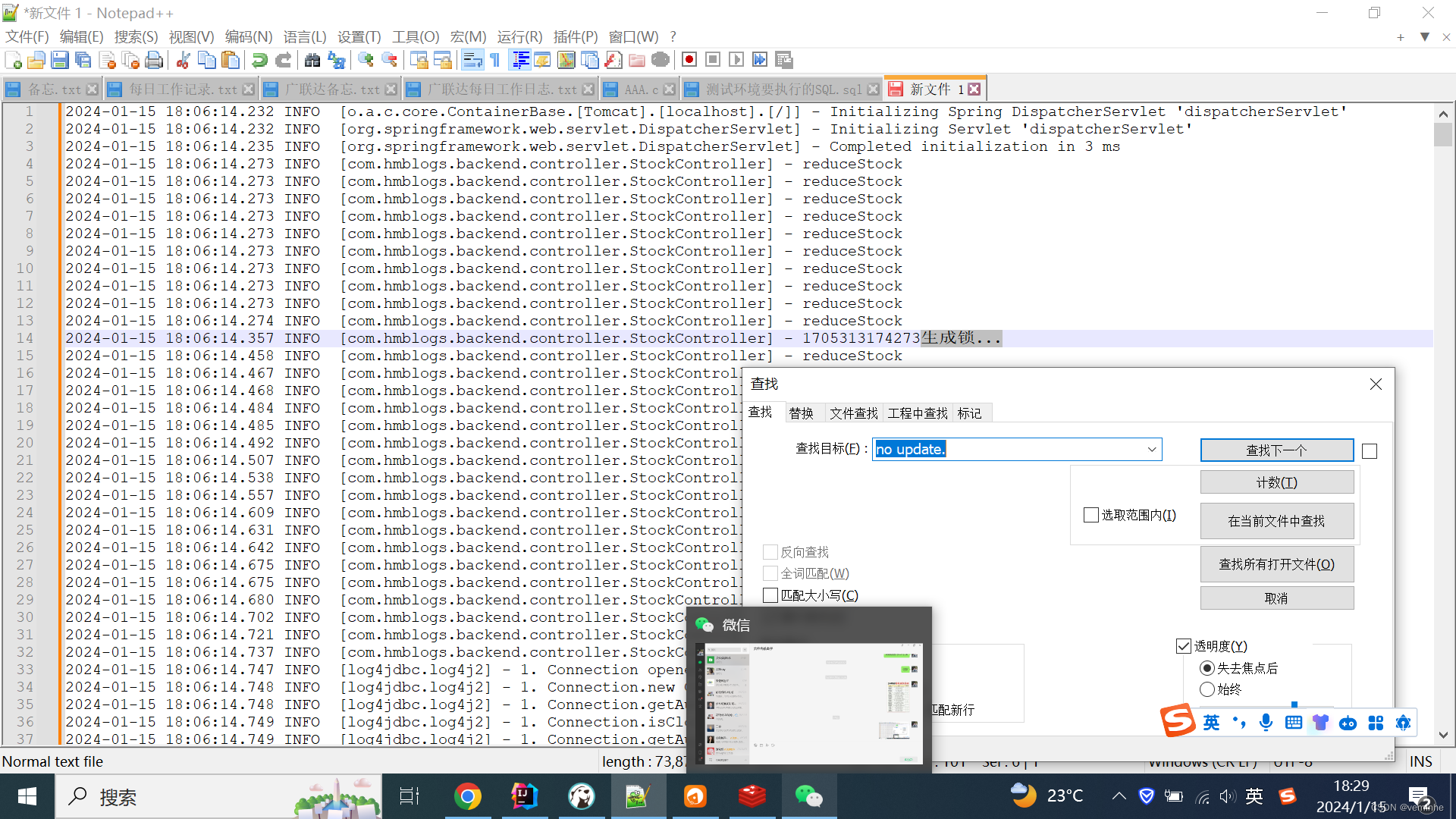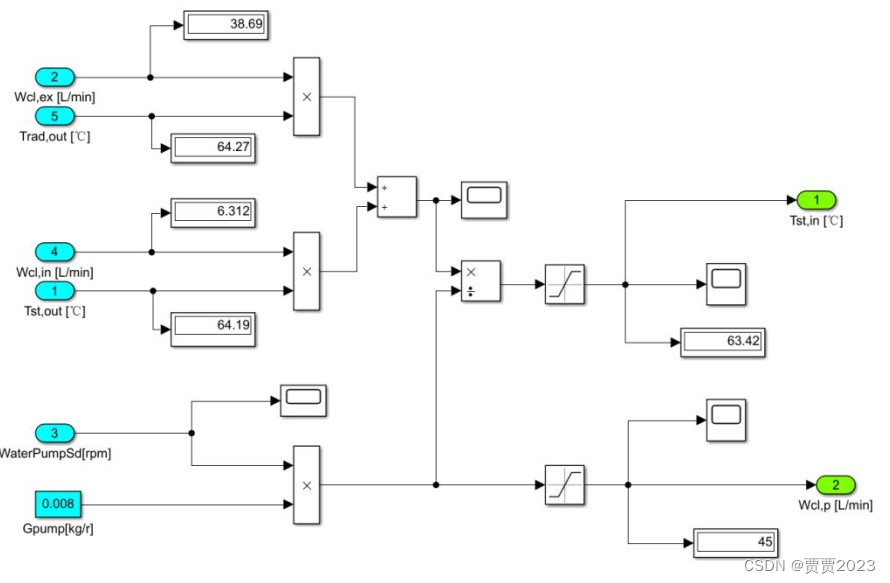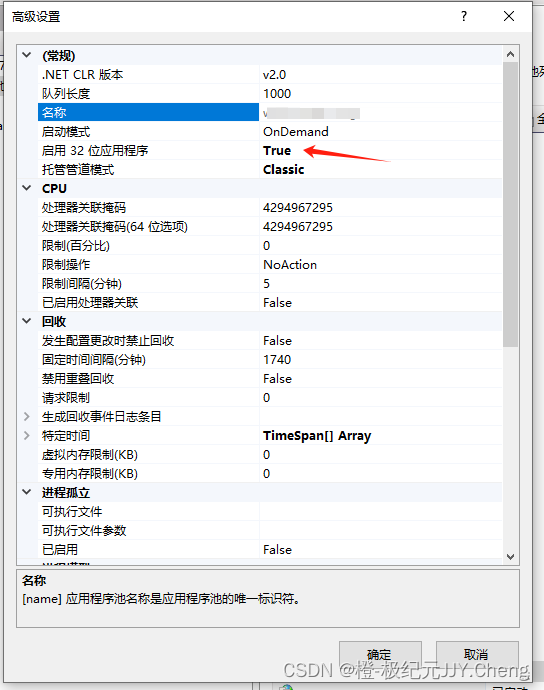骄傲一下,经过一个多月的努力,终于完成jpeg的全套编码。经验证此程序可以把摄像头yuv信号转为JPG图片。现在的程序还不完美,只能对长和宽尺寸是16倍数的信号转码。而且转码速度太慢,一帧1280×720的图片要2秒多。此程序只能对yuv420p编码。
此程序有很多重复的代码,主要是为了清晰好查错,如三分量的提取,处理等阶段可以用一个函数形式来完成,减少代码量。
说实话此程序没有实用价值,因为压缩时间太长,不可能用于摄像头的信号转换,查网络说是浮点运算太多,要用数学的方法把浮点运算转为乘法和加法的运算,所以不想再折腾了,转而去学ffmpeg。想借用它的库函数完成摄像头的信号压缩转码。目标是搞一个高速摄像头。
写了这么多博文主要是为了留存,以后想再搞又可以用上。还有把学习的思路也备份一下。

下面是全套程序:
#include <stdio.h>
#include <stdlib.h>
#include <string.h>
#include <sys/mman.h> //如果直接读文件到数组,也可不用此头文件
#include <math.h>
#define PI 3.1415926
#define pic_width 656
#define pic_heigth 480
#define filename "/home/wjs/Pictures/sample.yuv"
#define file_out "/home/wjs/Pictures/wz.jpg" //输出文件目录
static unsigned char o_bit[900000] = {};
static int to = 0;
int main(void) {
//-------JPEG通用量化表--------------------------------
unsigned char lhb0[0x45] = {0xff, 0xdb, 0, 0x43, 0,
16, 11, 10, 16, 24, 40, 51, 61,
12, 12, 14, 19, 26, 58, 60, 55,
14, 13, 16, 24, 40, 57, 69, 56,
14, 17, 22, 29, 51, 87, 80, 62,
18, 22, 37, 56, 68, 109, 103, 77,
24, 35, 55, 64, 81, 104, 113, 92,
49, 64, 78, 87, 103, 121, 120, 101,
72, 92, 95, 98, 112, 100, 103, 99
// 1, 1, 1, 1, 1, 1, 1, 1, 1, 1, 1, 1, 1, 1, 1, 1, 1, 1, 1, 1, 1, 1, 1, 1, 1, 1, 1, 1, 1, 1, 1, 1, 1, 1, 1, 1, 1, 1, 1, 1, 1, 1, 1, 1, 1, 1, 1, 1, 1, 1, 1, 1, 1, 1, 1, 1, 1, 1, 1, 1, 1, 1, 1, 1,
};
unsigned char lhb1[0x45] = {0xff, 0xdb, 0, 0x43, 1,
17, 18, 24, 47, 99, 99, 99, 99, //17,18,24,47
18, 21, 26, 66, 99, 99, 99, 99, //18,21,26,66,
24, 26, 56, 99, 99, 99, 99, 99, //24,26,56
47, 66, 99, 99, 99, 99, 99, 99, //47,66,
99, 99, 99, 99, 99, 99, 99, 99,
99, 99, 99, 99, 99, 99, 99, 99,
99, 99, 99, 99, 99, 99, 99, 99,
99, 99, 99, 99, 99, 99, 99, 99
// 1, 1, 1, 1, 1, 1, 1, 1, 1, 1, 1, 1, 1, 1, 1, 1, 1, 1, 1, 1, 1, 1, 1, 1, 1, 1, 1, 1, 1, 1, 1, 1, 1, 1, 1, 1, 1, 1, 1, 1, 1, 1, 1, 1, 1, 1, 1, 1, 1, 1, 1, 1, 1, 1, 1, 1, 1, 1, 1, 1, 1, 1, 1, 1,
};
//-------JPEG通用霍夫曼表------------------------------
unsigned char hfm0[] = {0xff, 0xc4, 0, 0x1f, 0, 0, 1, 5, 1, 1, 1, 1, 1, 1, 0, 0, 0, 0, 0, 0, 0, 0,
1, 2, 3, 4, 5, 6, 7, 8, 9, 0xa, 0xb
};
unsigned char hfm1[] = { 255, 196, 0, 181, 16, 0, 2, 1, 3, 3, 2, 4, 3, 5, 5, 4, 4, 0, 0, 1, 125, 1, 2, 3, 0, 4, 17,
5, 18, 33, 49, 65, 6, 19, 81, 97, 7, 34, 113, 20, 50, 129, 145, 161, 8, 35, 66, 177, 193, 21, 82, 209, 240,
36, 51, 98, 114, 130, 9, 10, 22, 23, 24, 25, 26, 37, 38, 39, 40, 41, 42, 52, 53, 54, 55, 56, 57, 58, 67, 68, 69,
70, 71, 72, 73, 74, 83, 84, 85, 86, 87, 88, 89, 90, 99, 100, 101, 102, 103, 104, 105, 106, 115, 116, 117, 118,
119, 120, 121, 122, 131, 132, 133, 134, 135, 136, 137, 138, 146, 147, 148, 149, 150, 151, 152, 153, 154, 162,
163, 164, 165, 166, 167, 168, 169, 170, 178, 179, 180, 181, 182, 183, 184, 185, 186, 194, 195, 196, 197, 198,
199, 200, 201, 202, 210, 211, 212, 213, 214, 215, 216, 217, 218, 225, 226, 227, 228, 229, 230, 231, 232, 233,
234, 241, 242, 243, 244, 245, 246, 247, 248, 249, 250
};
unsigned char hfm2[] = { 255, 196, 0, 31, 1, 0, 3, 1, 1, 1, 1, 1, 1, 1, 1, 1, 0, 0, 0, 0, 0,
0, 1, 2, 3, 4, 5, 6, 7, 8, 9, 10, 11
};
unsigned char hfm3[] = {255, 196, 0, 181, 17, 0, 2, 1, 2, 4, 4, 3, 4, 7, 5, 4, 4, 0, 1, 2,
119, 0, 1, 2, 3, 17, 4, 5, 33, 49, 6, 18, 65, 81, 7, 97, 113, 19, 34, 50, 129, 8, 20, 66, 145, 161, 177,
193, 9, 35, 51, 82, 240, 21, 98, 114, 209, 10, 22, 36, 52, 225, 37, 241, 23, 24, 25, 26, 38, 39, 40, 41,
42, 53, 54, 55, 56, 57, 58, 67, 68, 69, 70, 71, 72, 73, 74, 83, 84, 85, 86, 87, 88, 89, 90, 99, 100, 101,
102, 103, 104, 105, 106, 115, 116, 117, 118, 119, 120, 121, 122, 130, 131, 132, 133, 134, 135, 136, 137,
138, 146, 147, 148, 149, 150, 151, 152, 153, 154, 162, 163, 164, 165, 166, 167, 168, 169, 170, 178, 179,
180, 181, 182, 183, 184, 185, 186, 194, 195, 196, 197, 198, 199, 200, 201, 202, 210, 211, 212, 213, 214,
215, 216, 217, 218, 226, 227, 228, 229, 230, 231, 232, 233, 234, 242, 243, 244, 245, 246, 247, 248, 249,
250
};
//------ali--------------------------------------
int ali(int i, int out[2]) { //out[1]=len out[0]=int
int o = -1; //如果输出负数无意义
char len = -1; //如果输出负数无意义
if (i == 0) {
len = 0;
o = 0;
}
if (i == -1) {
len = 1;
o = 0;
}
if (i == 1) {
len = 1;
o = 1;
}
if ((i >= 2) && (i <= 32767)) { //二进制位数0-16位
for (int a = 0; a < 16; a++) {
if ((i >= pow(2, a)) && (i < pow(2, (a + 1)))) {
len = a + 1;
o = i;
}
}
}
if ((i >= -32767) && (i <= -2)) {
for (int a = 0; a < 16; a++) {
if ((i <= -pow(2, a)) && (i > -pow(2, (a + 1)))) {
len = a + 1;
o = i + pow(2, (a + 1)) - 1;
}
}
}
out[1] = len;
out[0] = o;
return 0;
}
//-------------Y_DC--------------------------------
int hfm_ydc(unsigned char i, int out[2]) { //out[1]=len out[0]=int
if (i == 0) {
out[1] = 2;
out[0] = 0b00;
}
if (i == 1) {
out[1] = 3;
out[0] = 0b010;
}
if (i == 2) {
out[1] = 3;
out[0] = 0b011;
}
if (i == 3) {
out[1] = 3;
out[0] = 0b100;
}
if (i == 4) {
out[1] = 3;
out[0] = 0b101;
}
if (i == 5) {
out[1] = 3;
out[0] = 0b110;
}
if (i == 6) {
out[1] = 4;
out[0] = 0b1110;
}
if (i == 7) {
out[1] = 5;
out[0] = 0b11110;
}
if (i == 8) {
out[1] = 6;
out[0] = 0b111110;
}
if (i == 9) {
out[1] = 7;
out[0] = 0b1111110;
}
if (i == 10) {
out[1] = 8;
out[0] = 0b11111110;
}
if (i == 11) {
out[1] = 9;
out[0] = 0b111111110;
}
return 0;
}
//-------------UV_DC-----------------------------------
int hfm_uvdc(unsigned char i, int out[2]) { //out[1]=len out[0]=int
if (i == 0) {
out[1] = 2;
out[0] = 0;
}
if (i == 1) {
out[1] = 2;
out[0] = 0b01;
}
if (i == 2) {
out[1] = 2;
out[0] = 0b10;
}
if (i == 3) {
out[1] = 3;
out[0] = 0b110;
}
if (i == 4) {
out[1] = 4;
out[0] = 0b1110;
}
if (i == 5) {
out[1] = 5;
out[0] = 0b11110;
}
if (i == 6) {
out[1] = 6;
out[0] = 0b111110;
}
if (i == 7) {
out[1] = 7;
out[0] = 0b1111110;
}
if (i == 8) {
out[1] = 8;
out[0] = 0b11111110;
}
if (i == 9) {
out[1] = 9;
out[0] = 0b111111110;
}
if (i == 10) {
out[1] = 10;
out[0] = 0b1111111110;
}
if (i == 11) {
out[1] = 11;
out[0] = 0b11111111110;
}
return 0;
}
//---------霍夫曼编码Y_AC-----------------------------------
int hfm_yac(unsigned char i_0, unsigned char i_len, unsigned int out[2]) {
// unsigned char i_0=0xf; //out[1]=len out[0]=int
// unsigned char i_len=0xa;
unsigned int len;
unsigned int o;
unsigned char zj = i_0 * 16 + i_len; //合成一个字节
unsigned char ws[16] = {};
memcpy(ws, &hfm1[5], 16);
unsigned char zh[162] = {};
memcpy(zh, &hfm1[21], 162);
int cx_ws, cx_b;
unsigned char hfm[17][0x7d] = {};
int t = 0;
for (int a = 0; a < 16; a++) { //把要编码的162个数按位数分为16个数组,二位一组....16位一组
if (ws[a] == 0) {
continue;
}
for (int b = 0; b < ws[a]; b++) {
hfm[a + 1][b] = zh[t];
t++;
}
}
for (int a = 0; a < 16; a++) { //查询输入数的位数和在所在组的顺序,组内顺序从0开始
if (ws[a] == 0) {
continue;
}
for (int b = 0; b < ws[a]; b++) {
if ( hfm[a + 1][b] == zj) {
cx_ws = a + 1; //得到输入数二进制位数,根据此数到相依位数的数组查询
cx_b = b; //输入数在按位数分组的数组中所在的位置,从0开始
break;
}
}
}
int o_js = 0; //每一组的第一个数的值
if (cx_ws == 2) {
o_js = 0b00;
}
if (cx_ws == 3) {
o_js = 0b100;
}
if (cx_ws == 4) {
o_js = 0b1010;
}
if (cx_ws == 5) {
o_js = 0b11010;
}
if (cx_ws == 6) {
o_js = 0b111010;
}
if (cx_ws == 7) {
o_js = 0b1111000;
}
if (cx_ws == 8) {
o_js = 0b11111000;
}
if (cx_ws == 9) {
o_js = 0b111110110;
}
if (cx_ws == 10) {
o_js = 0b1111110110;
}
if (cx_ws == 11) {
o_js = 0b11111110110;
}
if (cx_ws == 12) {
o_js = 0b111111110100;
}
if (cx_ws == 15) {
o_js = 0b111111111000000;
}
if (cx_ws == 16) {
o_js = 0b1111111110000010;
}
len = cx_ws;
o = o_js + cx_b;
out[1] = len;
out[0] = o;
return 0;
}
//---------UV_AC---------------------------------
int hfm_uvac(unsigned char i_0, unsigned char i_len, unsigned int out[2]) {
// unsigned char i_0=0xf; //out[1]=len out[0]=int
// unsigned char i_len=0xa;
unsigned int len;
unsigned int o;
unsigned char zj = i_0 * 16 + i_len; //合成一个字节
unsigned char ws[16] = {};
memcpy(ws, &hfm3[5], 16);
unsigned char zh[162] = {};
memcpy(zh, &hfm3[21], 162);
int cx_ws, cx_b;
unsigned char hfm[17][0x7d] = {};
int t = 0;
for (int a = 0; a < 16; a++) { //把要编码的162个数按位数分为16个数组,二位一组....16位一组
if (ws[a] == 0) {
continue;
}
for (int b = 0; b < ws[a]; b++) {
hfm[a + 1][b] = zh[t];
t++;
}
}
for (int a = 0; a < 16; a++) { //查询输入数的位数和在所在组的顺序,组内顺序从0开始
if (ws[a] == 0) {
continue;
}
for (int b = 0; b < ws[a]; b++) {
if ( hfm[a + 1][b] == zj) {
cx_ws = a + 1; //得到输入数二进制位数,根据此数到相依位数的数组查询
cx_b = b; //输入数在按位数分组的数组中所在的位置,从0开始
break;
}
}
}
int o_js = 0; //每一组的第一个数的值
if (cx_ws == 2) {
o_js = 0b00;
}
if (cx_ws == 3) {
o_js = 0b100;
}
if (cx_ws == 4) {
o_js = 0b1010;
}
if (cx_ws == 5) {
o_js = 0b11000;
}
if (cx_ws == 6) {
o_js = 0b111000;
}
if (cx_ws == 7) {
o_js = 0b1111000;
}
if (cx_ws == 8) {
o_js = 0b11110110;
}
if (cx_ws == 9) {
o_js = 0b111110100;
}
if (cx_ws == 10) {
o_js = 0b1111110110;
}
if (cx_ws == 11) {
o_js = 0b11111110110;
}
if (cx_ws == 12) {
o_js = 0b111111110100;
}
if (cx_ws == 14) {
o_js = 0b11111111100000;
}
if (cx_ws == 15) {
o_js = 0b111111111000010;
}
if (cx_ws == 16) {
o_js = 0b1111111110001000;
}
len = cx_ws;
o = o_js + cx_b;
out[1] = len;
out[0] = o;
return 0;
}
//-----------FDCT()函数------------------------------------
int fdct( unsigned char i[8][8], int o[8][8] ) { //i 为输入 o 为参数传入的输出转换后的数据
double s;
double au;
double av;
for (int u = 0; u < 8; u++) {
for (int v = 0; v < 8; v++) {
for (int y = 0; y < 8; y++) {
for (int x = 0; x < 8; x++) {
s = s + (1.0 / 4) * (i[y][x] - 128) * cos((2 * y + 1) * u * PI / 16) * cos((2 * x + 1) * v * PI / 16);
}
}
if (u == 0) {
au = 1.0 / sqrt(2);
} else {
au = 1.0;
}
if (v == 0) {
av = 1.0 / sqrt(2);
} else {
av = 1.0;
}
s = s * au * av; //-30.1856
int s1 = round(s * 100); //-3019
s = s1 / 100.0; //-30.19
o[u][v] = s; //double 转为char 类型
s = 0;
}
}
return 0;
}
//-----------规范RLC格式---------------------
int zl(int len, int (*i)[2], int (*o)[2]) {
int t = 0; //如果中间有一次超过15个0,o的下标要加一,因为增加了(15,0)
for (int a = 0; a < len; a++) {
if ((a < len) && (i[a][1] >= 16) && (i[a][0] != 0)) {
o[a + t][0] = 0;
o[a + t][1] = 15;
o[a + 1 + t][0] = i[a][0];
o[a + 1 + t][1] = i[a][1] - 15;
t++;
}
if ((a < len) && (i[a][1] < 16)) {
memcpy(&(o[a + t][0]), &(i[a][0]), 8); //一行为单位复制
}
if ((a == len) && (i[a][0] == 0)) {
o[a + t][0] = 0;
o[a + t][1] = 0;
break;
}
}
return len + t;
}
//-----------去0-----------------------------
int q0(int i[64], int (*o)[2]) {
int t = 0; //输出数组序号
int z = 0; //计算连续的0
o[0][1] = 0;
o[0][0] = i[0];
t = 1;
for (int a = 1; a < 64; a++) { // a
if ((i[a] == 0) && (i[a + 1] == 0) && ((a + 1) < 63)) { //000001
z++;
} // a
if ((i[a] == 0) && (i[a + 1] == 0) && ((a + 1) == 63)) { //0000结束
z++; //本次的0
o[t][0] = 0;
o[t][1] = z + 1; //加a+1的0
break; //判断完成
} // a
if ((i[a] == 0) && (i[a + 1] != 0)) { //000100
z++; //加上本次的一个0
o[t][0] = i[a + 1];
o[t][1] = z;
z = 0; //清0,计算下次的连续0
t++;
a = a + 1;
}
if ((i[a] != 0) && (a == 0)) { //第一个数非0
o[t][0] = i[a];
o[t][1] = 0;
t++;
}
if ((a > 0) && (i[a] != 0) && (i[a - 1] != 0)) { //防止第3种重复读取,这种是读取连续的非0
o[t][0] = i[a];
o[t][1] = 0;
t++;
}
}
return t + 1;
}
//--------Z 排序--------------------------------
int zz(int (*i)[8], int o[64]) {
int zb[64] = {0, 1, 8, 16, 9, 2, 3, 10, 17, 24, 32, 25, 18, 11, 4, 5, 12, 19, 26, 33, 40, 48, 41, 34, 27, 20, 13, 6,
7, 14, 21, 28, 35, 42, 49, 56, 57, 50, 43, 36, 29, 22, 15, 23, 30, 37, 44, 51, 58, 59, 52, 45, 38, 31, 39, 46, 53, 60, 61, 54, 47,
55, 62, 63
};
int *p = (int *)i;
for (int a = 0; a < 64; a++) {
o[a] = p[zb[a]];
}
return 0;
}
// -----量化函数---------------
int lh(int (*i)[8], unsigned char (*lhb)[8], int (*o)[8]) {
for (int a = 0; a < 8; a++) {
for (int b = 0; b < 8; b++) {
o[a][b] = round((i[a][b]) / (lhb[a][b]));
}
}
return 0;
}
//---------编码start-------------------------------------
//---------读量化表-------------------------------
char lh00[64] = {}; //提取量化表
char lh10[64] = {};
memcpy(lh00, &lhb0[5], 64); //使用自定义量化表
memcpy(lh10, &lhb1[5], 64);
//-----------读yuv ----------------------------------------------------------------
FILE *f = fopen(filename, "rb"); //如用mmap 必须以读写方式打开文件
if (f == NULL) {
puts("filename error");
exit(-1);
}
fseek(f, 0, SEEK_END);
int len_file = ftell(f);
fseek(f, 0, SEEK_SET);
int fd = fileno(f);
unsigned char *mp = mmap(NULL, len_file, PROT_READ, MAP_SHARED, fd, 0); //必须要读,写
//---------------------------------------------------------------------------------
unsigned char yfl[pic_heigth * pic_width] = {};
unsigned char ufl[pic_heigth * pic_width / 4 ] = {};
unsigned char vfl[pic_heigth * pic_width / 4 ] = {};
for (int a = 0; a < pic_heigth * pic_width; a++) {
yfl[a] = mp[a];
}
for (int a = 0; a < pic_heigth * pic_width / 4; a++) {
ufl[a] = mp[a + pic_heigth * pic_width];
}
for (int a = 0; a < pic_heigth * pic_width / 4; a++) {
vfl[a] = mp[a + pic_heigth * pic_width * 5 / 4];
}
//----------------------------------------------------------------------------------
//-------Y 分割8×8----------------------------
int yp = 0; //输出数组序号
unsigned char y64[pic_width * pic_heigth / 64][64] = {}; //输出数组
for (int y = 0; y < pic_heigth; y = y + 8) { //提取左上角点的垂直数据
for (int x = 0; x < pic_width; x = x + 8) { //提取左上角点的水平数据
int n = 0; //每一个数组下标取值 0-63
for (int a = 0; a < 8; a++) {
for (int b = 0; b < 8; b++) {
y64[yp][n] = yfl[pic_width * (a + y) + (b + x)];
n++;
}
}
yp++;
}
}
//-------U分割8×8----------------------------
int up = 0; //输出数组序号
unsigned char u64[pic_width * pic_heigth / 256][64] = {}; //输出数组
for (int y = 0; y < pic_heigth / 2; y = y + 8) { //提取左上角点的垂直数据
for (int x = 0; x < pic_width / 2; x = x + 8) { //提取左上角点的水平数据
int n = 0; //每一个数组下标取值 0-63
for (int a = 0; a < 8; a = a + 1) {
for (int b = 0; b < 8; b = b + 1) {
u64[up][n] = ufl[(pic_width / 2) * (a + y) + (b + x)];
n++;
}
}
up++;
}
}
//-------V分割8×8----------------------------
int vp = 0; //输出数组序号
unsigned char v64[pic_width * pic_heigth / 256][64] = {}; //输出数组
for (int y = 0; y < pic_heigth / 2 ; y = y + 8) { //提取左上角点的垂直数据
for (int x = 0; x < pic_width / 2 ; x = x + 8) { //提取左上角点的水平数据
int n = 0; //每一个数组下标取值 0-15
for (int a = 0; a < 8; a = a + 1) {
for (int b = 0; b < 8; b = b + 1) {
v64[vp][n] = vfl[(pic_width / 2) * (a + y) + (b + x)];
n++;
}
}
vp++;
}
}
//------------------------------------------------------
//------Y处理函数---------------------------------
int yy(int ysc, unsigned char lh0[8][8], unsigned char y[8][8]) {
int y_fdct[8][8] = {};
fdct(y, y_fdct);
int y_lh[8][8] = {};
lh(y_fdct, lh0, y_lh);
int y_z[64] = {};
zz(y_lh, y_z);
int y_0[64][2] = {};
int len_y_0 = q0(y_z, y_0);
int y_zl[64][2] = {};
int len_y_zl = zl(len_y_0, y_0, y_zl);
//--------Y-DC----------------------------------
int ydc[2] = {}; //ydc[1]=len ydc[0]=int
int q = y_zl[0][0] - ysc; //DC 差值
ali(q, ydc); //处理Y_DC
int ydc_hfm[2] = {}; //ydc_hfm[1]=len
hfm_ydc(ydc[1], ydc_hfm);
int ls = (ydc_hfm[0] << ydc[1]) | ydc[0]; //组合成一int
for (int a = (ydc[1] + ydc_hfm[1]); a > 0; a--) {
o_bit[to] = (ls & (int)pow(2, (a - 1))) >> (a - 1); //取ls 每一位数
to++;
}
//-------Y-AC-------------------------------
for (int a = 1; a < len_y_zl; a++) {
int yac[2] = {};
ali(y_zl[a][0], yac); //取AC 值
unsigned int yac_h[2] = {};
hfm_yac(y_zl[a][1], yac[1], yac_h); //0的个数+系数位数
int ls = (yac_h[0] << yac[1]) | yac[0];
for (int a = (yac[1] + yac_h[1]); a > 0; a--) {
o_bit[to] = (ls & (int)pow(2, (a - 1))) >> (a - 1); //取ls 每一位数
to++;
}
}
return y_zl[0][0]; //返回本次的Y_DC值
}
unsigned char (*lh0)[8] = (unsigned char (*)[8])lh00;
unsigned char (*lh1)[8] = (unsigned char (*)[8])lh10; //UV 量化表转成8×8
//------UV处理函数---------------------------------
int uu(int usc, unsigned char lh1[8][8], unsigned char u[8][8]) {
int u_fdct[8][8] = {};
fdct(u, u_fdct);
int u_lh[8][8] = {};
lh(u_fdct, lh1, u_lh);
int u_z[64] = {};
zz(u_lh, u_z);
int u_0[64][2] = {};
int len_u_0 = q0(u_z, u_0);
int u_zl[64][2] = {};
int len_u_zl = zl(len_u_0, u_0, u_zl);
//--------UV-DC----------------------------------
int udc[2] = {}; //ydc[1]=len ydc[0]=int
int q = u_zl[0][0] - usc; //DC 差值
ali(q, udc); //处理Y_DC
int udc_hfm[2] = {}; //ydc_hfm[1]=len
hfm_uvdc(udc[1], udc_hfm);
int ls = (udc_hfm[0] << udc[1]) | udc[0]; //组合成一int
for (int a = (udc[1] + udc_hfm[1]); a > 0; a--) {
o_bit[to] = (ls & (int)pow(2, (a - 1))) >> (a - 1); //取ls 每一位数
to++;
}
//-------UV-AC-------------------------------
for (int a = 1; a < len_u_zl; a++) {
int uac[2] = {};
ali(u_zl[a][0], uac); //取AC 值
unsigned int uac_h[2] = {};
hfm_uvac(u_zl[a][1], uac[1], uac_h); //0的个数+系数位数
int ls = (uac_h[0] << uac[1]) | uac[0];
for (int a = (uac[1] + uac_h[1]); a > 0; a--) {
o_bit[to] = (ls & (int)pow(2, (a - 1))) >> (a - 1); //取ls 每一位数
to++;
}
}
return u_zl[0][0]; //返回本次的Y_DC值
}
int vv(int vsc, unsigned char lh1[8][8], unsigned char v[8][8]) {
int v_fdct[8][8] = {};
fdct(v, v_fdct);
int v_lh[8][8] = {};
lh(v_fdct, lh1, v_lh);
int v_z[64] = {};
zz(v_lh, v_z);
int v_0[64][2] = {};
int len_v_0 = q0(v_z, v_0);
int v_zl[64][2] = {};
int len_v_zl = zl(len_v_0, v_0, v_zl);
//--------UV-DC----------------------------------
int vdc[2] = {}; //ydc[1]=len ydc[0]=int
int q = v_zl[0][0] - vsc; //DC 差值
ali(q, vdc); //处理Y_DC
int vdc_hfm[2] = {}; //ydc_hfm[1]=len
hfm_uvdc(vdc[1], vdc_hfm);
int ls = (vdc_hfm[0] << vdc[1]) | vdc[0]; //组合成一int
for (int a = (vdc[1] + vdc_hfm[1]); a > 0; a--) {
o_bit[to] = (ls & (int)pow(2, (a - 1))) >> (a - 1); //取ls 每一位数
to++;
}
//-------UV-AC-------------------------------
for (int a = 1; a < len_v_zl; a++) {
int vac[2] = {};
ali(v_zl[a][0], vac); //取AC 值
unsigned int vac_h[2] = {};
hfm_uvac(v_zl[a][1], vac[1], vac_h); //0的个数+系数位数
int ls = (vac_h[0] << vac[1]) | vac[0];
for (int a = (vac[1] + vac_h[1]); a > 0; a--) {
o_bit[to] = (ls & (int)pow(2, (a - 1))) >> (a - 1); //取ls 每一位数
to++;
}
}
return v_zl[0][0]; //返回本次的Y_DC值
}
//----------------------------------------------------------------
int udiff = 0;
int vdiff = 0;
int ydiff = 0;
//---------Y 排序---------------------------------- //第一个MCU y01 y02 y10 y11 u01 v01
int yw[pic_heigth*pic_width/64]={};
int wn=0;
for(int y=0;y<pic_heigth/8;y=y+2){
for(int x=0;x<pic_width/8;x=x+2){
for(int b=0;b<2;b++){
for(int a=0;a<2;a++){
yw[wn]=(y+b)*pic_width/8+x+a;
wn++;
}
}
}
}
//---------MCU---------------------------------
for (int a = 0; a < pic_width * pic_heigth / 256; a++) { //MCU=4Y+1U+1V
for (int b = 0; b < 4; b++) {
unsigned char y1[8][8] = {};
memcpy(y1, &(y64[yw[a * 4 + b]][0]), 64);
ydiff = yy(ydiff, lh0, y1);
}
unsigned char u1[8][8] = {};
memcpy(u1, &(u64[a][0]), 64);
udiff = uu(udiff, lh1, u1);
unsigned char v1[8][8] = {};
memcpy(v1, &(v64[a][0]), 64);
vdiff = vv(vdiff, lh1, v1);
}
//-------生成jpeg文件-----------------------------
unsigned char h1 = pic_heigth / 256;
unsigned char h2 = pic_heigth % 256;
unsigned char l1 = pic_width / 256;
unsigned char l2 = pic_width % 256;
unsigned char zhen[] = {255, 192, 0, 17, 8, h1, h2, l1, l2, 3, 1, 0x22, 0, 2, 0x11, 1, 3, 0x11, 1 }; //帧头
unsigned char sos[] = {255, 218, 0, 12, 3, 1, 0, 2, 17, 3, 17, 0, 63, 0 }; //比特流开始
unsigned char jp[900000] = {};
jp[0] = 0xff; //jpeg开始
jp[1] = 0xd8;
int k = 2;
memcpy(&jp[k], lhb0, (2 + 0x43)); //量化表
k = k + 2 + 0x43;
memcpy(&jp[k], lhb1, (2 + 0x43));
k = k + 2 + 0x43;
memcpy(&jp[k], zhen, (2 + 0x11)); //帧全局
k = k + 2 + 0x11;
memcpy(&jp[k], hfm0, (2 + 0x1f)); //霍夫曼表
k = k + 2 + 0x1f;
memcpy(&jp[k], hfm1, (2 + 0xb5));
k = k + 2 + 0xb5;
memcpy(&jp[k], hfm2, (2 + 0x1f));
k = k + 2 + 0x1f;
memcpy(&jp[k], hfm3, (2 + 0xb5));
k = k + 2 + 0xb5;
memcpy(&jp[k], sos, (2 + 0xc)); //比特流开始
k = k + 2 + 0xc;
for (int a = 0; a < 8 - (to % 8); a++) {
o_bit[to + a] = 1; //比特流凑成8的倍数,不够补1
}
to = to + 8 - to % 8;
for (int a = 0; a < to; a = a + 8) { //比特流转成字节
unsigned char zz = o_bit[a] * 128 + o_bit[a + 1] * 64 + o_bit[a + 2] * 32 + o_bit[a + 3] * 16 + o_bit[a + 4] * 8 + o_bit[a + 5] * 4 + o_bit[a + 6] * 2 + o_bit[a + 7];
if (zz == 0xff) {
jp[k] = zz;
jp[k = k + 1] = 0; //0xff 后面跟0
} else {
jp[k] = zz;
}
k = k + 1;
}
jp[k = k + 1] = 0xff; //jpeg 结束
jp[k = k + 1] = 0xd9;
FILE *fz = fopen(file_out, "w+b");
fwrite(jp, k, 1, fz);
fclose(fz);
puts("编码over");
return 0;
}



















